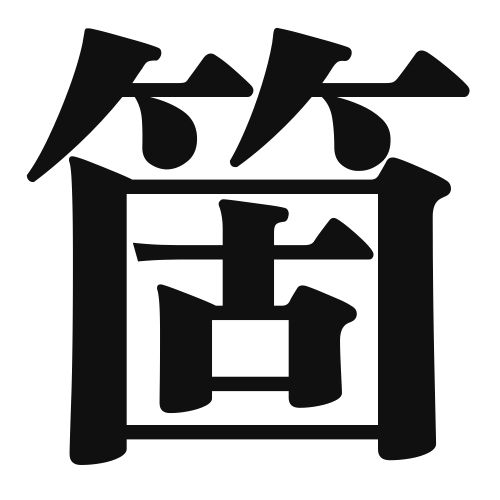1. Overview of Meaning
The kanji “箇” (ka) is used to indicate a small unit or individual item, often in a counting context. It is commonly used as a counter for objects, particularly in a more formal or literary sense.
2. Formation and Radical
Formation of the Kanji: The kanji “箇” is a phonetic compound character, which combines elements to convey both sound and meaning. It consists of the radical for “bamboo” (竹) on the left, which relates to the material often used for making small items, and the phonetic component “可” (ka) on the right.
Radical: The radical of “箇” is 竹 (take), which means “bamboo.” This radical is often associated with items made from bamboo or small, slender objects.
3. Examples of Usage
Common Words and Phrases: “一個” (ikkо̄) meaning “one piece” or “one item,” and “個人” (kojin) meaning “individual.”
Example Sentences in Daily Conversation:
- この箱にはリンゴが一個入っています。
(This box contains one apple.) - 彼は個人情報を大切にしています。
(He values personal information.)
4. Synonyms and Antonyms
Similar Kanji: “個” (ko) is a similar kanji that also means “individual” or “piece,” but it is more commonly used in everyday language compared to “箇.”
Antonyms: “多数” (tasuu) meaning “many” or “a large number” can be considered an antonym, as it refers to a quantity rather than an individual unit.
5. Cultural and Historical Background
Relation to Japanese Culture: The kanji “箇” is often used in formal contexts, such as in legal documents or literature, reflecting the importance of precision in counting and categorizing items in Japanese culture.
Proverbs and Idioms: While there are no specific proverbs that prominently feature “箇,” its usage in counting and categorization is essential in various expressions related to organization and individuality in Japanese society.
